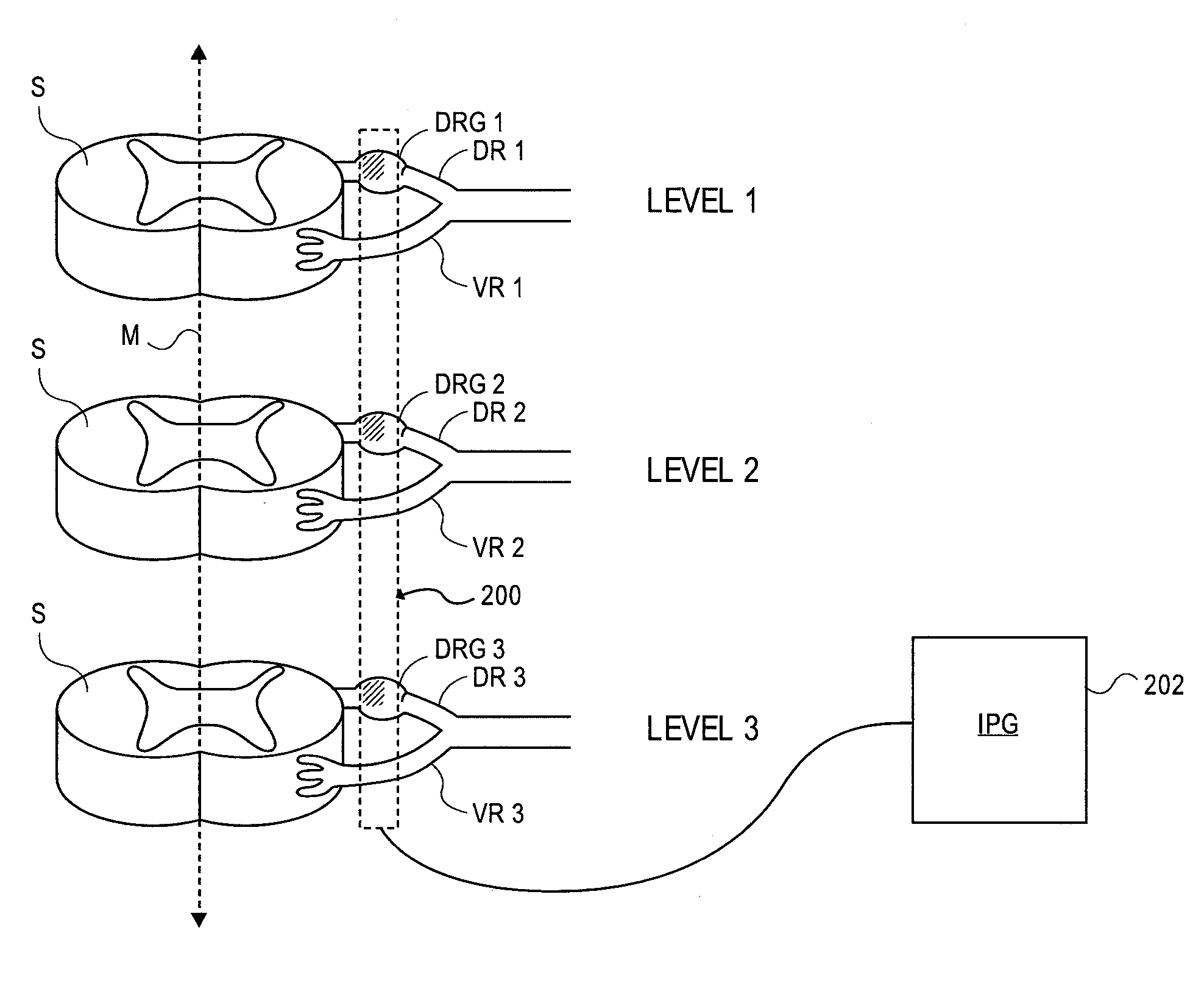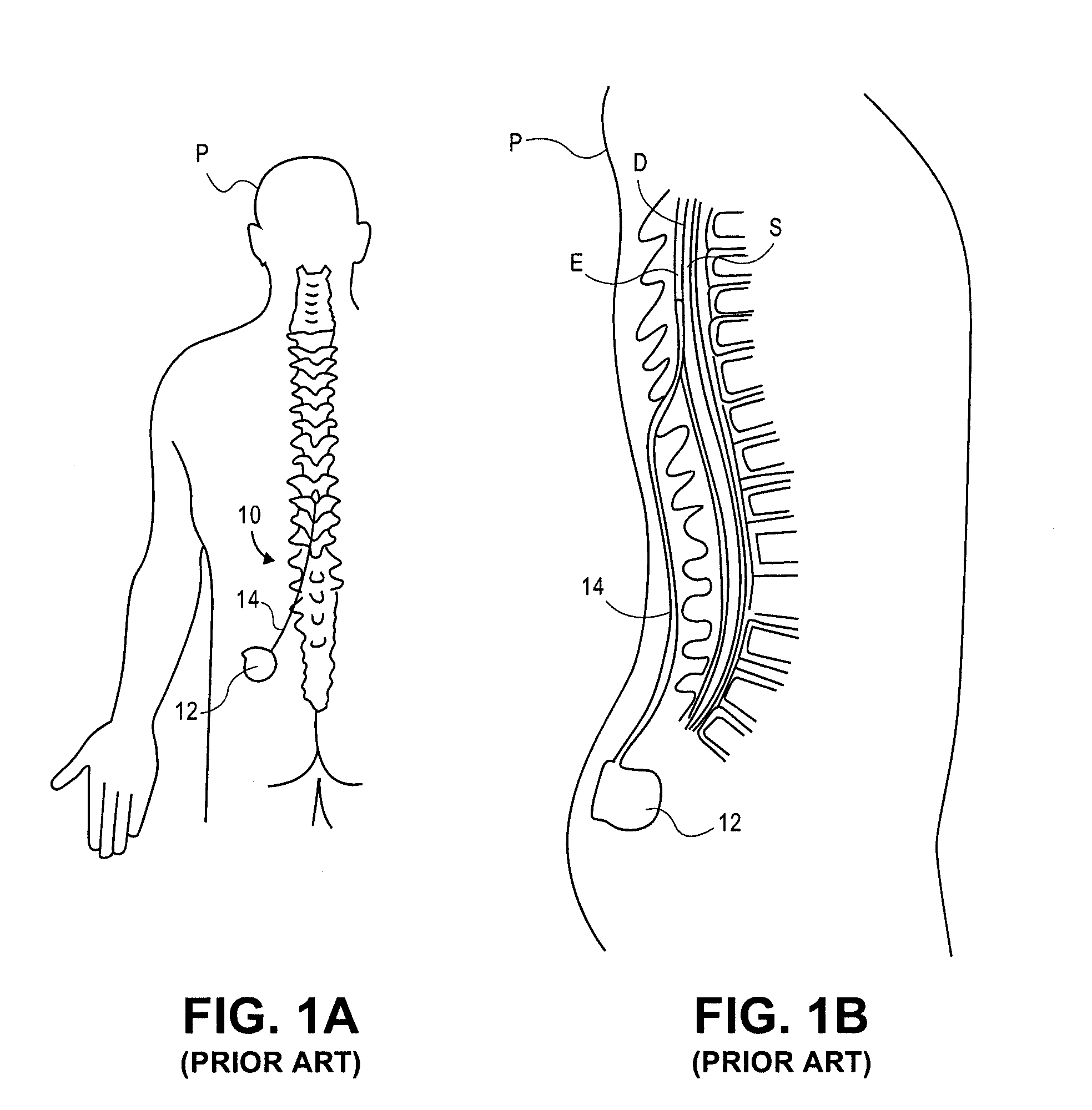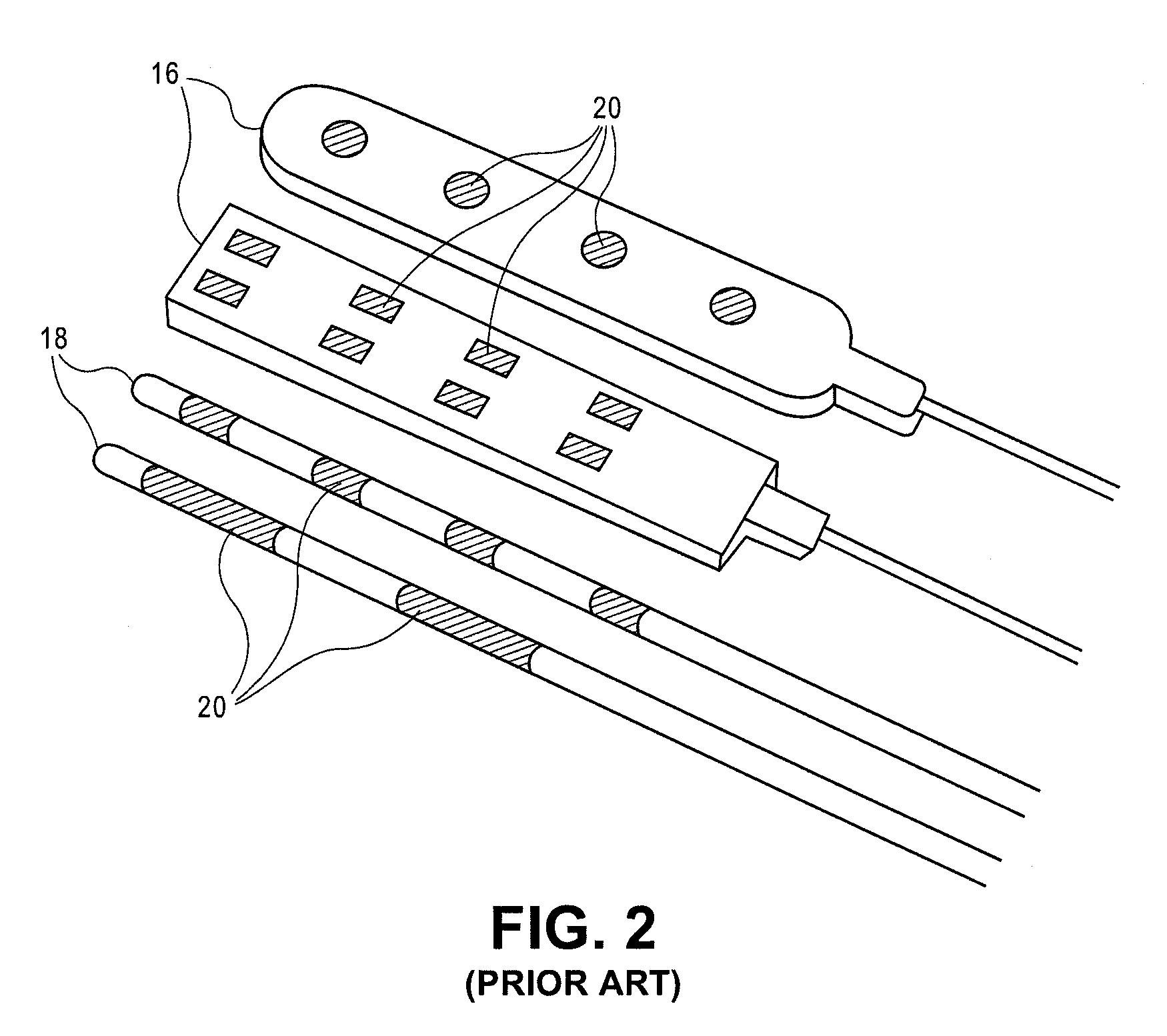Grouped leads for spinal stimulation
a spinal cord and grouping technology, applied in the field of spinal cord grouping leads, can solve the problems of uncontrollable amount of stimulation energy needed to provide the desired amount of neurostimulation, unsatisfactory stimulation of the motor nerve, further altering the local neural excitability state, etc., to achieve the effect of reducing deleterious side effects and improving treatment effectiveness
- Summary
- Abstract
- Description
- Claims
- Application Information
AI Technical Summary
Benefits of technology
Problems solved by technology
Method used
Image
Examples
Embodiment Construction
[0041]FIG. 6 illustrates positioning of an embodiment of a device 200 of the present invention so as to optionally simultaneously stimulate various levels (levels 1, 2, 3 in this example) of the spinal cord S. The device 200 is shown positioned within an epidural space of the spinal column at a lateral distance from the midline M of the of the spinal column which aligns the device 200 with the dorsal root ganglions DRG 1, DRG 2, DRG 3. Thus, portions of the device 220 align with and may optionally contact the dorsal root ganglions DRG 1, DRG 2, DRG 3, as indicated by shading. These aligned portions provide targeted or selective stimulation of one or more of the dorsal root ganglions DRG 1, DRG 2, DRG 3 while avoiding or reducing stimulation to surrounding tissues, such as the ventral roots VR1, VR2, VR3.
[0042]The device 200 is electrically connected to a power source or implantable pulse generator (IPG) 202, as shown, which is implanted in the body of the patient. FIG. 6 illustrates...
PUM
 Login to View More
Login to View More Abstract
Description
Claims
Application Information
 Login to View More
Login to View More - R&D
- Intellectual Property
- Life Sciences
- Materials
- Tech Scout
- Unparalleled Data Quality
- Higher Quality Content
- 60% Fewer Hallucinations
Browse by: Latest US Patents, China's latest patents, Technical Efficacy Thesaurus, Application Domain, Technology Topic, Popular Technical Reports.
© 2025 PatSnap. All rights reserved.Legal|Privacy policy|Modern Slavery Act Transparency Statement|Sitemap|About US| Contact US: help@patsnap.com



